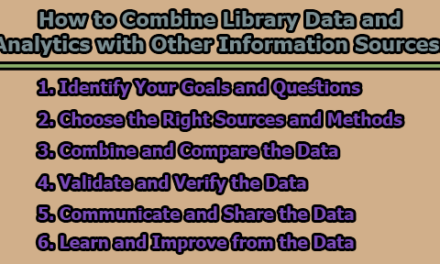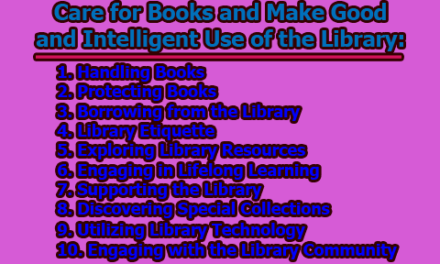Best Practices for Leveraging Feedback from Diverse Patrons to Enhance Library Services:
Feedback is an invaluable resource for libraries, as it offers insights into the needs, preferences, and satisfaction of their diverse patrons. To make the most of this information, libraries must adopt best practices for collecting and utilizing feedback effectively. In this article, we will explore the best practices for leveraging feedback from diverse patrons to enhance library services.
1. Define Your Goals: Before embarking on the process of collecting feedback, it’s crucial to have well-defined objectives. Identify what you intend to achieve and how you will measure it. For instance, you may aim to enhance the accessibility, relevance, or quality of your library collections, programs, or facilities. Alternatively, you might focus on increasing patron engagement, loyalty, or diversity. Defining specific and measurable goals will enable you to choose the most appropriate feedback methods, questions, and indicators.
2. Choose Your Methods: Various methods can be employed to collect feedback from a diverse range of patrons. These methods include surveys, interviews, focus groups, observation, suggestion boxes, and social media. Each method has its own set of advantages and disadvantages based on your specific goals, available resources, and context. For example, surveys can reach a broad and diverse audience, but may lack the depth and nuance of personal interactions. Interviews provide detailed insights but can be time-consuming and influenced by interviewer bias. To achieve a comprehensive and balanced understanding, it’s often beneficial to use a combination of methods.
3. Ask the Right Questions: The quality of feedback largely depends on the quality of the questions asked. Construct questions that are relevant, clear, concise, and unbiased. Avoid questions that are too broad, vague, leading, or loaded. It is also crucial to steer clear of overly sensitive, personal, or intrusive inquiries unless they are absolutely necessary and respondents have given informed consent. Utilize a mix of open-ended and closed-ended questions, depending on your objectives and chosen methods. Open-ended questions allow patrons to express their opinions in their own words, while closed-ended questions yield standardized and quantifiable responses. Additionally, employ various scales like Likert, rating, ranking, or multiple choice to measure different aspects of patrons’ feedback.
4. Ensure Diversity and Inclusion: The challenge in collecting feedback from a diverse patron base lies in ensuring representation and inclusion of all groups and perspectives. Consider factors such as age, gender, race, ethnicity, religion, education, income, language, disability, and digital literacy. Employ strategies to engage and respect diverse patrons, including sampling, segmentation, translation, adaptation, confidentiality, and anonymity. To accurately analyze feedback, consider strategies like disaggregation, triangulation, and contextualization.
5. Take Action and Follow Up: Collecting feedback is just the beginning; libraries must also act on this valuable information to enhance services. Develop a plan and a process to address issues raised by feedback, and communicate actions and results to patrons and stakeholders. Prioritize and address the most critical issues emerging from feedback, and seek further input or clarification if needed. Continuously monitor and evaluate the impact and effectiveness of actions taken and be ready to adjust them as required. It’s vital to report and share feedback findings, actions, and outcomes with patrons and stakeholders, expressing gratitude for their contributions. Establish a culture of continuous improvement and learning in your library services by seeking ongoing and regular feedback from diverse patrons.
In conclusion, feedback from diverse patrons is a priceless asset for libraries seeking to improve their services. By following these best practices, libraries can ensure that the feedback they receive is reliable, representative, and actionable. Ultimately, the aim is to use this feedback to drive meaningful improvements, leading to enhanced library services that better meet the needs and preferences of the community they serve.

Former Student at Rajshahi University










